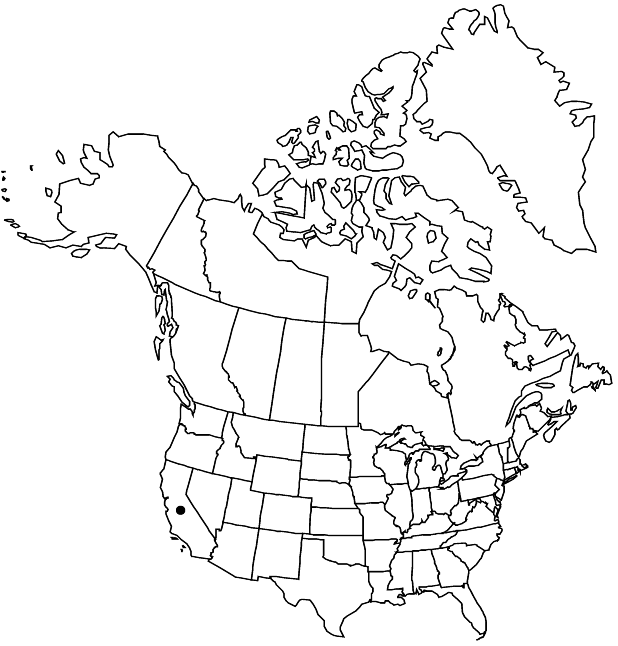Heuchera caespitosa
Proc. Calif. Acad. Sci., ser. 2, 6: 426, plate 57. 1896,.
Herbs subcaulescent; caudex branched. Flowering-stems 10–40 cm, long-stipitate-glandular. Leaves: petiole long-stipitate-glandular; blade reniform or orbiculate, shallowly 5-lobed, 1–4 cm, base cordate or truncate, lobes rounded, margins dentate, apex obtuse, surfaces short or long-stipitate-glandular. Inflorescenses moderately dense. Flowers: hypanthium strongly bilaterally symmetric, free 2–2.8 mm on adaxial side, pink to purplish, narrowly campanulate, widening at mouth, 4–7 mm, short-stipitate-glandular proximally, long-stipitate-glandular distally; sepals spreading, green-tipped, equal, 1–1.2 mm, apex rounded; petals spreading, white, oblanceolate, (clawed), unlobed, 2–2.5 mm (longer than sepals), margins entire; stamens included 0.5 mm to exserted 0.5 mm; styles to 0.5 mm included, 1.5 mm, 0.1+ mm diam. Capsules ovoid, 4 mm, beaks divergent, not papillose. Seeds dark-brown, ellipsoid, 0.7 mm.
Phenology: Flowering Jun.
Habitat: Shaded, rocky slopes
Elevation: 1900-2300 m
Discussion
Of conservation concern.
Heuchera caespitosa occurs in the western Transverse Ranges in Kern, San Bernardino, Tulare, and Ventura counties, and in the Outer South Coast Ranges, southern Sierra Nevada foothills, and southern Sierra Nevada. It is very similar to H. abramsii, H. brevistaminea, H. hirsutissima, and H. pulchella; the group needs thorough phylogenetic analysis.
Selected References
None.
Lower Taxa
"full" is not a number.
